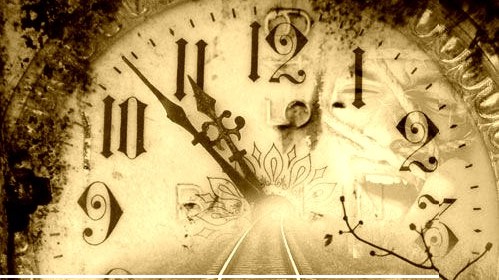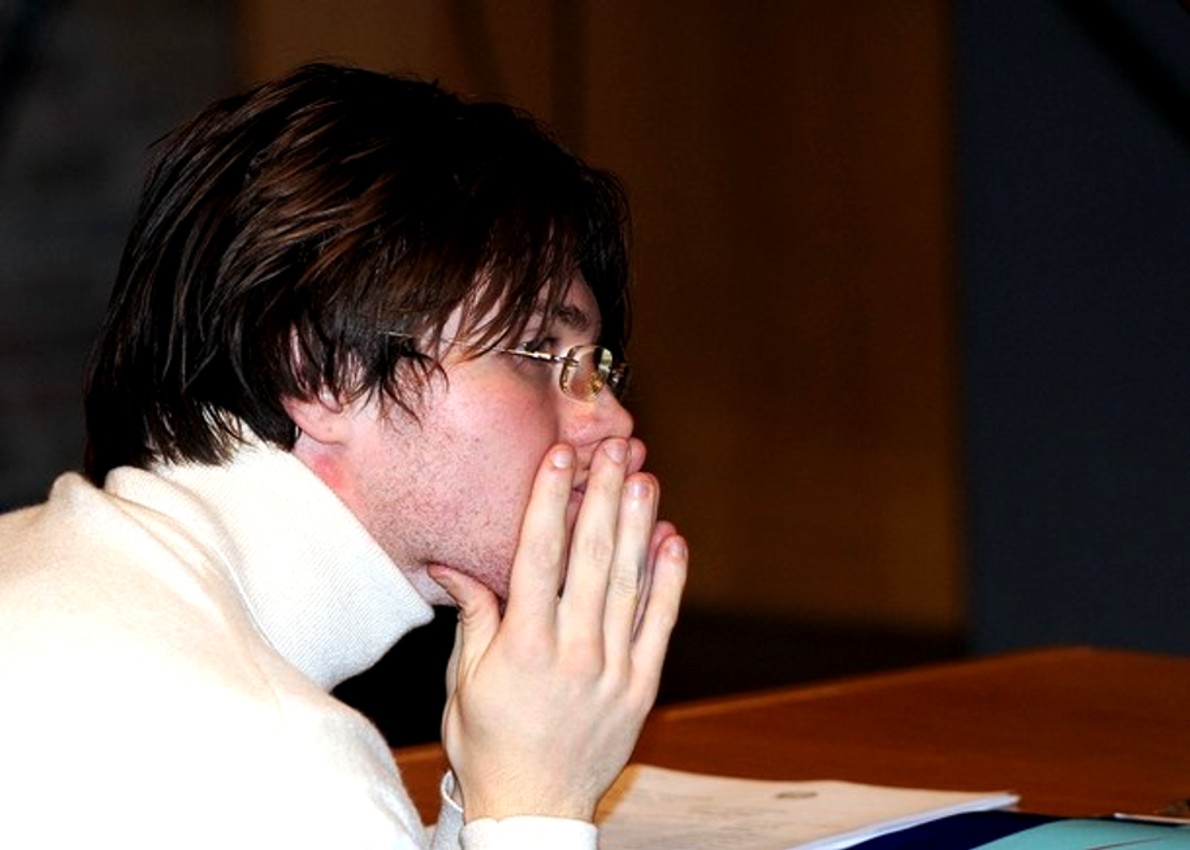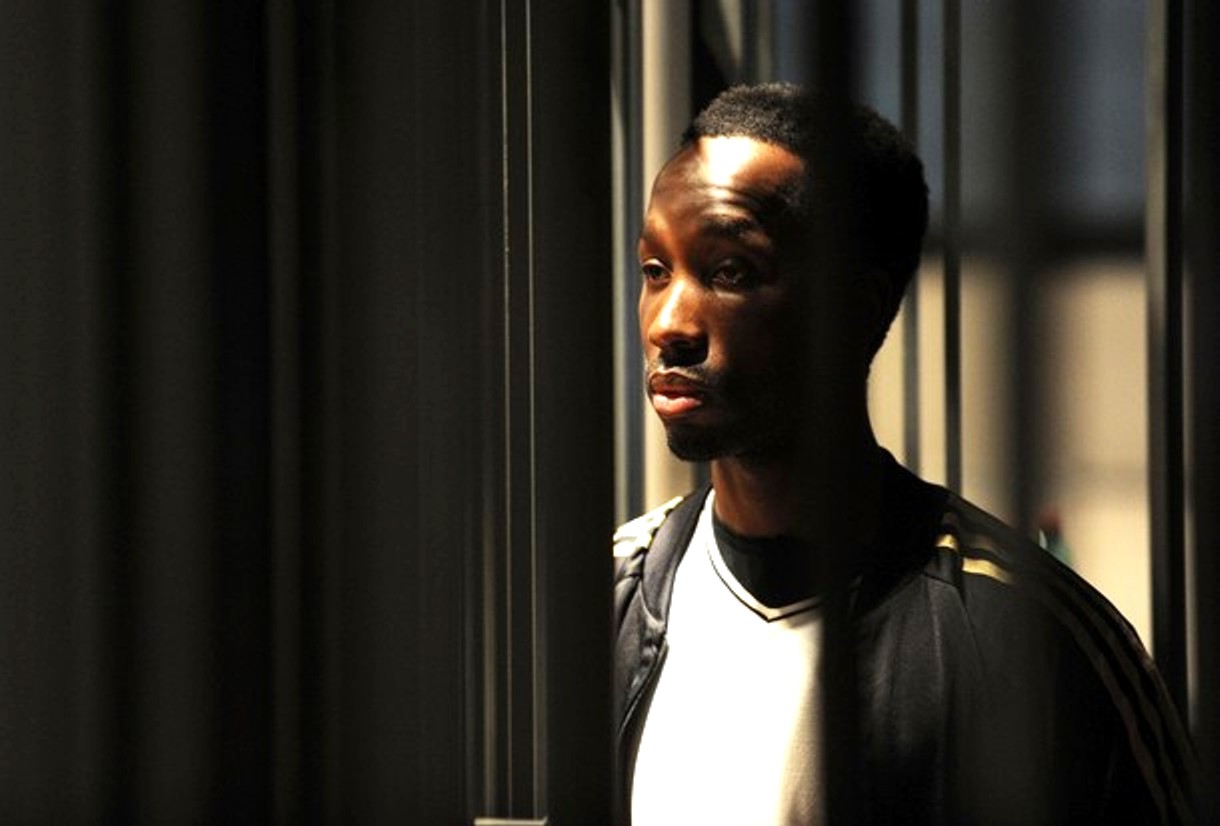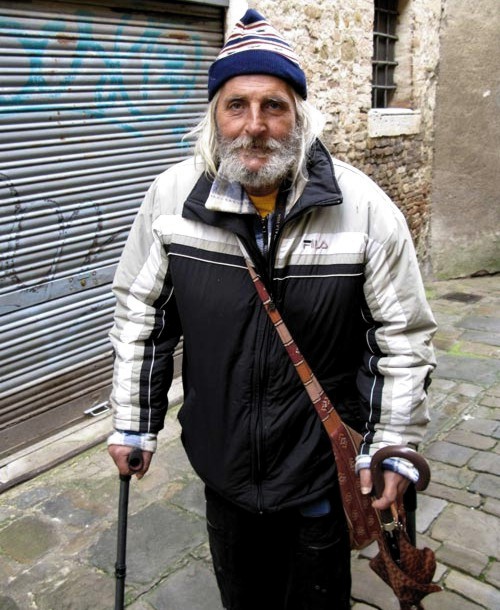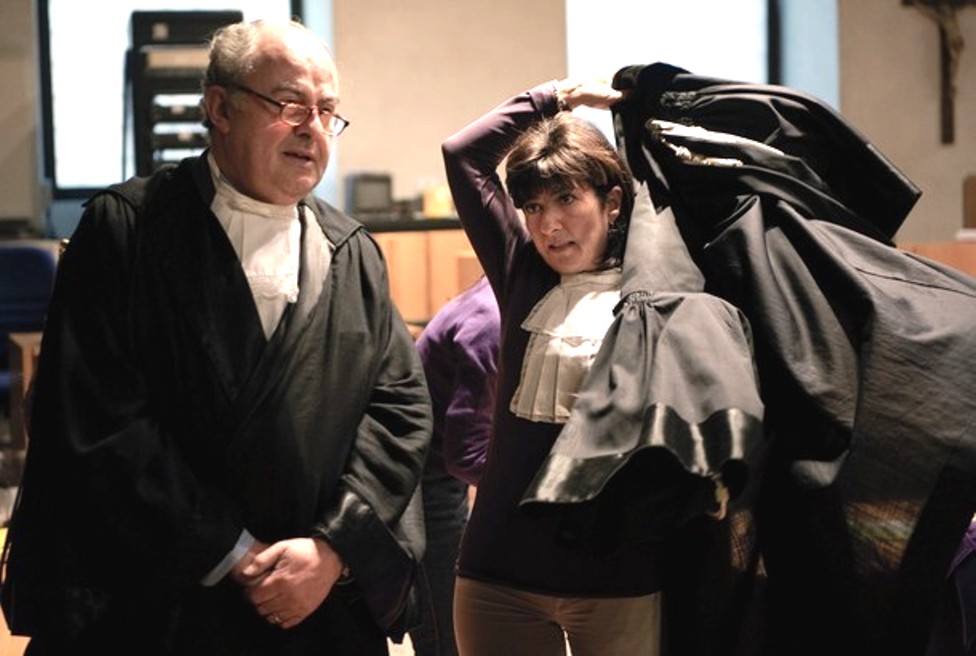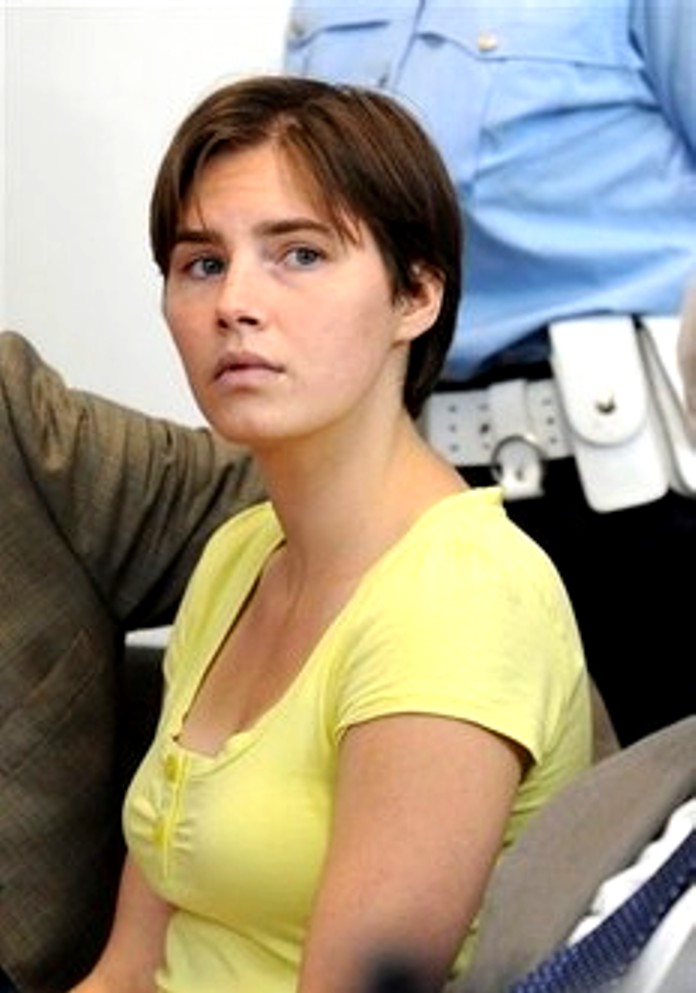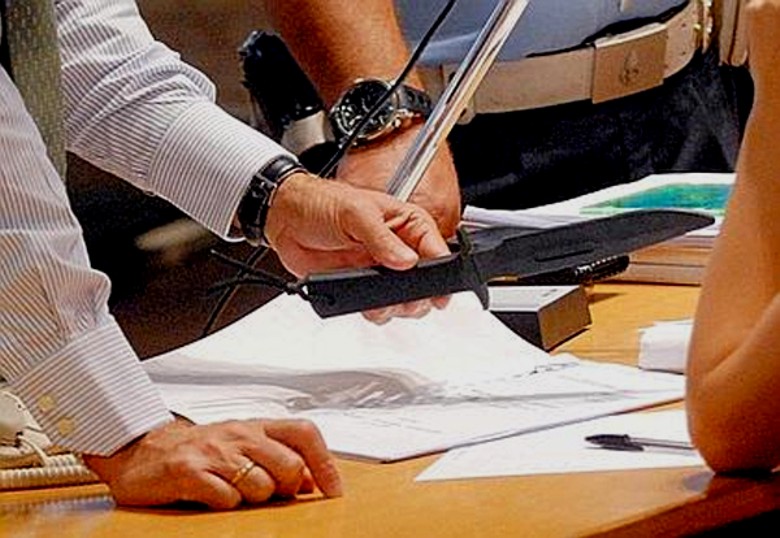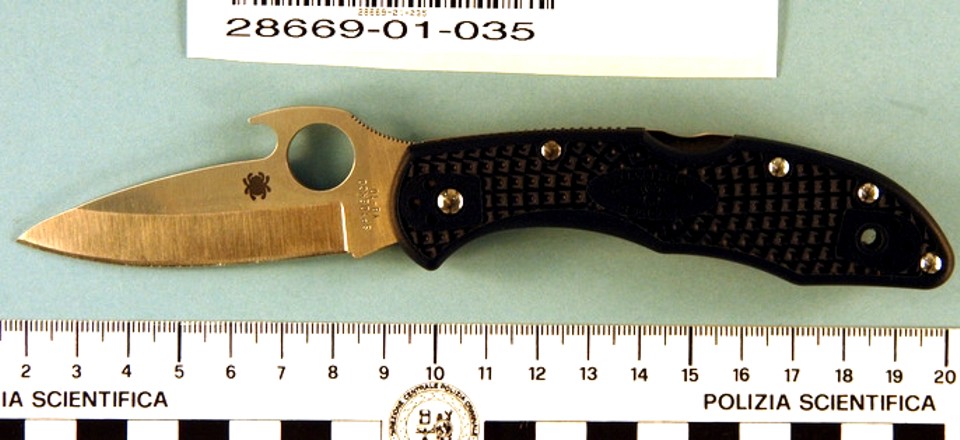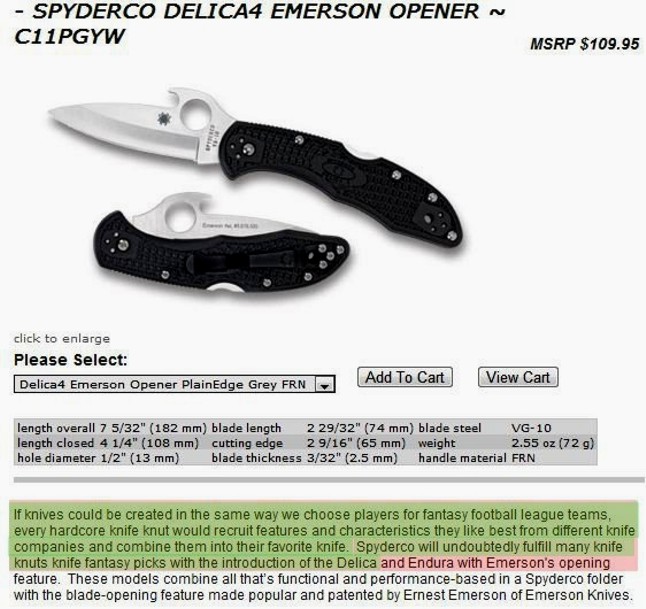
Category: Evidence & Witnesses
Monday, November 29, 2010
Explaining The Massei Report: The Timeline For Events Before, During, And After The Night #1
Posted by catnip
The Masssei Timeline To Midnight 1 Nov
These two posts list all of the events precisely timed in the Massei Report. Page numbers shown in brackets are those in the original Italian version.
This timeline will be reposted over on the TJMK Massei Report summaries and highlights page as we populate that page further starting this week.
There are plenty of mentions of imprecise occasions and general time periods, such as when Rudy told Giorgio Cocciaretto about liking Amanda (p26) or when lawyer Palazzoli found out their stolen computer had been recovered in Milan (p33), but they are not listed here.
nts_before_during_2/”>Post #2
Please click here for more
Explaining The Massei Report: The Timeline For Events Before, During, And After The Night #2
Posted by catnip
The Masssei Timeline After Midnight 1 Nov
We continue here from Post #1 These two posts list all of the events precisely timed in the Massei Report. Page numbers shown in brackets are those in the original Italian version.
There are plenty of mentions of imprecise occasions and general time periods, such as when Rudy told Giorgio Cocciaretto about liking Amanda (p26) or when lawyer Palazzoli found out their stolen computer had been recovered in Milan (p33), but they are not listed here.
Please click here for more
Monday, November 22, 2010
Explaining The Massei Report: Motive In The Meredith Kercher Case And Its Addressing In The Report DRAFT
Posted by James Raper
superceded by revised post 12 april 2011
I have read the Massei Report which in the main I thought was excellent. He was incisive with his logic, particularly, though not exclusively, with regard to the staging of the break in and how that necessarily meant that Amanda was present at the scene when the murder was committed.
However, I thought that he was rather feeble in his coverage of the defendants’ motives as to the attack which led to this brutal murder. Perhaps he thought it better to stick with the indisputable evidence.
Since this pointed to a sex attack, he surmised that Guede had a go at Meredith first, and then - because the stimulation was too much for them - he was joined by Amanda and Raffaele. This works but does seem a bit weak. There were, to my mind, undoubtedly other factors at work, and it is these which I wish to address.
For instance, Massei asks, though he says we can not know, had Amanda egged Guede on as to the “availability” (my word, not his) of Meredith during or prior to their presence at the cottage?
Frankly the answer to that has to be “yes” since it is a bit difficult to figure out why Amanda and Raffaele would otherwise wish Guede to join them at the cottage. I doubt that Amanda and Raffaele would have wanted Guede around if they were just going there to have an innocent cuddle and sex and to smoke cannabis, as Massei implies.
The evidence is that Raffaele hardly knew Guede and in the presence of Amanda was very possessive about her. If he had known of Guede’s interest in Amanda he would have been even less keen to have Guede around.
Also, if all was so innocent beforehand, then why would Guede have tried it on with Meredith and then pressed the situation in the face of her refusal to co-operate, knowing that there were two others there who could have come to her assistance?
The answer is of course that Guede knew full well in advance that there would be no problem with Amanda and Raffaele. He had been invited there and primed to act precisely in the way he did, at least initially. Why? Well there is plenty of evidence as to why Amanda, in her mind, may have been looking for payback time on Meredith. Come to that later.
What does not get much attention in the Massei Report, other than a terse Not Guilty at the end, is the matter of Meredith’s missing rent money and credit cards and whether Amanda and Raffaele stole them.
It is as if the Judge (well, the jury really) felt that this was a trivial issue that brought nothing much to the case and thus it was not necessary to give it much attention. And indeed there is no summation of or evaluation of that evidence.
Now that does surprise me. Of course there may have been some technical flaw with the charge and the evidence. But in the absence of any comment on this then we do not know what that may be. What I do know is that the matter, if proven, is not trivial.
A theft significantly ups the stakes for Amanda and Raffaelle just prior to the murder and produces a dynamic, which, threaded together with a sexual assault, makes for a far more compelling scenario to murder.
It also leads one to conclude that there was a greater degree of premeditation involved : not premeditation to murder but as to an assault, rather than the more spontaneous ” let’s get involved” at the time of the sex attack as postulated by Massei. An Italian lawyer could tell us whether this would have added extra time on to their sentence. It is worthy of consideration.
What is the evidence? What evidence was before the court? I do not have access to trial records, only what I have read about the case in the book “Darkness Descending” and on the True Justice for Meredith website. Therefore I stand to be corrected if I misrepresent the evidence or if my interpretation of it does not met the test of logic.
There were two lay witnesses who were compelling in the trial. The first was Filomena Romanelli, the flatmate and trainee lawyer. If there was anyone who was going to ensure that the rent was paid on time, it would have been her.
She gave evidence that the rent being due very soon she asked Meredith about her contribution of 300 euros and was told by Meredith that all was OK because she had just withdrawn 200 euros from her bank. Filomena assumed from Meredith’s reply that the balance was already to hand.
Is there a problem with this evidence? Is it hearsay and thus inadmissible under Italian law?
Perhaps it is not enough by itself because of course had Meredith not in fact withdrawn the money from her bank, or sufficient funds to cover the stated amount, then that would be a fatal blow to that part of the theft charge. Her bank manager was summoned to give evidence, essentially to corroborate or disprove Filomena’s testimony.
I do not know what exactly that evidence was. One would assume that at the very least it did not disprove her testimony. Had it done so that would, as I have said, been fatal. It is also unbelievable that Massei would have overlooked this in the Report. I am assuming that Meredith did not tell a white lie and that the bank records corroberate this.
There may of course be an issue of timing as I understand that the bank manager told the court that transactions at a cash machine are not necessarily entered on the customer account the same day . However that does not seem to me to be significant.
One must also think that the bank manager was asked what other cash withdrawals had been made if the credit cards were taken at the same time as the money. I understand that there is of course a caveat here: my assumptions in the absence of knowing exactly what the bank manager’s evidence was.
It would be useful also to know how and when the rent was normally paid. It sounds as if it was cash on the day the landlord came to collect.
We do know that the police did not find any money or Meredith”˜s credit cards. Had Meredith, a sensible girl, blown next month’s rent on a Halloween binge? Unlikely. So somebody stole it. Again, just as with the fake break in, when according to Amanda and Raffaele nothing was stolen, who and only who had access to the cottage to steal the money? Yes, you have guessed it. Amanda, of course.
Does the matter of missing rent money figure anywhere else? There is the evidence of Meredith’s phone records which show that she rang her bank late on the evening of her murder just prior to the arrival of Amanda, Raffaele and Guede.
Why did she do this? What do you think? What is the first thing you do when you discover that your credit cards are missing? Obviously have a good look round. Then you ring your bank to put a stop on them. It may have been that she was not actually able to do that at that time of night. But worthy of further investigation.
The missing money also figured in the separate trial of Guede. He made a statement which formed the whole basis of his defence. Basically this was that he had an appointment with Meredith at the cottage, had consensual foreplay with her and was on the toilet when he heard the doorbell ring etc, etc.
What he also added was that just before all this Meredith was upset because her rent money had disappeared and that they had both searched for it with particular attention to Amanda’s room. Now why does Guede mention this? Remember this is his defence. Alibi is not quite the right word. He had plenty of time to think about it or something better.
His defence was moulded around (apart from lies) (1) facts he knew the police would have ie no point denying that he was there or that he had sexual contact with Meredith : his biological traces had been left behind, and (2) facts known to him and not to the police at that stage ie the money, which he could use to make his statement as a whole more credible, whilst at the same time giving the police a lead. He is shifting the focus, if the police were to follow it up, on to the person he must have been blaming for his predicament, Amanda.
If all three, Amanda, Raffaele and Guede, went to the cottage together, as Massei has it, then Guede learns about the missing rent money not as referred to in his statement but because Meredith has already discovered the theft and worked out who has had it and challenges Amanda over it when the three arrive.
Perhaps this is when Guede goes to the toilet and listens to music on his Ipod. After all he is just there for the sex and this is all a distraction.
I expect, however, that Guede’s “evidence” was not a factor in the jury’s consideration. Neither Guede’s lawyers nor those for Amanda and Raffaele wanted Guede to testify at the trial, for obvious reasons Without Guede testifying his statement would have been objectionable if not inadmissable.
I would have thought, though, that the prosecution could have brought him in as a witness, with the agreement of the judge, to testify as to the missing rent money only. Guede and his lawyers might well have agreed to this on the basis that such limited questioning would not have incriminated him further and might well have had a beneficial effect in his appeal. Convicted criminals often give evidence in court. What weight is attached to the evidence of a convicted criminal is a matter for the jury.
As the prosecution have appealed Amanda’s and Raffaele’s sentences, asking for lengthier terms, could they produce Guede now? I don’t know.
When were the money and credit cards stolen? According to Amanda and Raffaele they spent Halloween together at Raffaele’s and the next day went to the cottage. Meredith was there. Meredith left at about 1pm to spend the evening with her friends and Amanda and Raffaele left at about 3pm.
This is according to Amanda and Raffaele of course but probably likely because if the money had already been stolen Meredith may likely have known with different consequences for everyone. So Amanda and Raffaele could have stolen the money and credit cards after she left - the day of her murder.
Incidentally Filomena testified that Meredith never locked the door to her room except on the occasions she went home to England. Meredith was a very trusting girl.
What motive had Amanda for wanting the money apart from the obvious one of profit? There are numerous plausible motives.
To fund a growing drugs habit which she shared with Raffaele? Not an inconsiderable expense for a student. Both Amanda and Raffaele explained their confusion and hesitancy as being due to the fact that they had been going rather hard on drugs.
To embarrass Meredith vis a vis her landlord and the other flatmates? Because Amanda’s own financial circumstances were deteriorating and to fund her own rent contribution? She was probably about to be sacked at Lumumba’s bar and to add insult to injury would likely be replaced by Meredith. In fact Meredith was well liked by all whereas Amanda’s star was definitely on the wane.
That must have irked Amanda. Filomena testified that Meredith and Amanda had begun to have issues with each other towards the end.
With Meredith’s money both Amanda and Raffaele could have afforded something a little stronger than the usual smoke and I speculate that they spent the late afternoon getting stoned. Did they use the credit cards? If they did then it was probably small cash withdrawals but the likelihood is that they did not as in the limited time prior to Meredith’s death they had the use of her ready cash, and after her death the safer thing was to destroy them.
Of course Amanda was still an employee of Lumumba and she would have to turn up that evening for work, but perhaps she no longer cared all that much about the consequences.
Again I speculate that she and Raffaele met Guede before she was due at work, discussed Meredith’s “availability” and Amanda, Raffaele and Guede agreed to meet up on the basketball court at Grimana Square between 11 and 11.30pm, by which time Amanda would expect to have got away from the Le Chic bar.
What else did Amanda and Raffaele have in mind when arranging the meeting or when thinking about it afterwards? Guede was of course thinking about sex and that Amanda and Raffaele were going to facilitate an encounter with Meredith later that evening.
However Amanda and Raffaele had something else on their minds. The logic of their position vis a vis Meredith cannot have escaped them. They had taken her money and credit cards whilst she was out. Had she not already discovered this fact then she would in any event be back, notice the money and credit cards were missing and would put 2 and 2 together.
Very probably Meredith had not already discovered the theft because, spending a quiet time with friends, she had no cause to use her credit cards. What would happen? Who would she tell? Would she call the police? How are they going to deal with this? Obviously deny it but logic has its way and the situation with or without the police being called in would be uncomfortable.
They decided to turn the tables and make staying in Perugia very uncomfortable for Meredith. Now the embarrassing, for Meredith, sexual advances from Guede were going to be manipulated by them in to a sexual humiliation for Meredith.
Meredith was not going to be seriously harmed but as and when they were challenged by Meredith over the missing money, as inevitably they would be, she was to be threatened with injury or worse. Knives come in useful here.
She would likely then give up her tenancy at the cottage, perhaps leave Italy. Whether that looks like the probable and likely outcome I leave you to judge, but just how much of this would be precise and careful planning given, as seems likely, that Amanda and Raffaele were going hard on the drugs?
They were not in a position to act any earlier than they did. They knew that Meredith was away with her friends and probably would not come home until much later. Amanda was expected at Lumumba’s. Guede was not available until the pre-arranged time.
In the event Amanda did not have to go to work. She and Raffaele were at a loose end until the time of their pre-arranged meeting with Guede. They got to the basketball court early. They had to wait for him. They could not ring him as he did not have a phone.
We know Amanda and Raffaele were on the basketball court (some of the time if not all of the time) between 9.30 and sometime just before 11.30pm. This is because of the evidence of a Mr Curatolo, the second compelling lay witness. He testified to seeing Amanda and Raffaele having heated arguments, and occasionally going to the parapet at the edge of the court to peer over.
What were they looking at? Go to the photographs of Perugia on the True Justice for Meredith website and you will see. From the parapet you get a good view of the gates that are the entrance, and the only entrance as I understand it, to the cottage.
So why the behaviour observed by Mr Curatolo? They may have been impatient waiting for Guede to arrive. Were they actually to go through with this? One might speculate that Raffaele was not actually as keen on it as Amanda.
Was Meredith at home, alone, and had she found the money was missing and had she called the police or tipped off someone already? Who was hanging around outside the entrance to the cottage and why?
There was, apparently, a car parked at the entrance, a broken down car nearby with the occupants inside awaiting a rescue truck, and the rescue truck itself, all present at different times. Amanda and Raffaele did not wish to be observed going through the gates with these potential witnesses around.
We, of course, cannot know for certain what went on in the minds of Amanda and Raffaele and account for much of their movements between the time of them leaving the cottage at, they say, 3pm and their departure from the basketball court at around 11.30pm. It has to be speculation but there is a logical consistency to the above narrative if they had stolen Meredith’s money and credit cards earlier that day, and their meeting up with Guede just before 11.30pm does not look like a co-incidence.
From there on in to the inevitable clash between Amanda and Meredith over the money and credit cards, the threats and intimidation by Amanda and Raffaele to scare her, the sexual assault as part of that, and the tragic death of Meredith.
In a civil case in this country, the standard of proof is “the balance of probabilities” rather than the higher standard of (to paraphrase) “beyond reasonable doubt” in a criminal case.
If my earlier caveat about the bank manager’s evidence not disproving that Meredith had withdrawn her money is unnecessary then, at the very least, on the balance of probabilities, it is proven that Meredith had that money, and the credit cards, and that Amanda and Raffaele had stolen them from her. Some might think (I do) that it is proven on the higher standard too.
It is a shame that the Massei court did not consider and evaluate all of the evidence before it.
It did not need to fear that by doing so it may have been including something which others might consider eminently appealable, since the evidence and reasoning on which it did convict Aamanda and Raffaele of murder was sound and impeccable.
Addendum : There have been a great many useful comments on this post. As a consequence I accept that the scenario outlined above requires at least two modifications and these are in my last comment below.
Thursday, November 04, 2010
Report #2 On Perugia: What Very Very Close Neighbors Sollecito And Guede Really Were
Posted by SomeAlibi
Sunday, October 31, 2010
Report #1 On Perugia: I Meet A Very Decent Brave Man
Posted by SomeAlibi
I walk the journey to the cottage from where Meredith and Sophie parted ways at the Via Del Lupo. Time from there to the cottage is 5 minutes at a leisurely pace. I video the journey for proof.
As I finish, I decide to walk up Via Scortici with the wall of the basketball court to my left, just to prove to myself that it isn’t what sane people would normally do (they go round the basketball court on the stairs of the Via Della Pergola which is why Amanda saw Rudy, practising on the basketball court, daily).
Managing not to get spread against the wall by a slowly passing car which honks at me for my patent stupidity, I come to the bottom corner of Piazza Grimana by the news-stand. The entrance to Corso Garibaldi, Raffaele’s road, is five metres away.
I turn round to look at the entrance to Piazza Grimana and see the figure of a man on crutches with shoulder-length white grey hair poking out from the bottom of a striped bobble hat walking away from me and towards the steps. Is it? I cross quickly and go round the top of the basketball court, along the pavement of Via Pinturicchio trying to look down to see if I can identify him. If it’s who I think it is, I haven’t been able to find him in previous days.
The man is dressed in a white and blue ski jacket and moves purposefully, even with the crutches. He goes to the steps of Via Della Pergola and heads down towards the cottage. But then he does a right and disappears into Via Melo which is half way down the steps and leads to an area of public garden. I go down after him, down the steps, and turn into Via Melo too. I try to take a picture but inadvertently engage video mode. That has to go quickly ““ I need to catch him.
I walk past a woman and then overtake him. As I do, I look back at him naturally as if just with a friendly passing nod. I allow my “˜spontaneous’ surprise to stop me.
“Mr Curatolo?” I say, in my best very English sounding Italian. He looks at me in a friendly way. His eyes are bright, unbothered, looking straight at me. He furrows his eyebrows minutely at me.
“Curatolo” he says with a pronunciation which is different from mine but in ways in which I’d never be able to explain. “Yes, I’m Curatolo” he says in Italian.
His voice is soft, clear, his diction precise, also unbothered, and he looks at me calmly.
I smile at him and nod, mostly to myself. I size him up for a couple of seconds. I reach out to shake his hand which he does so unhesitatingly, taking if from the crutch at his side. As I draw close to him, I hate myself for doing it, but I use an old trick a policeman taught me and breath in deeply through mouth and nose. It looks like a normal inhalation, which of course it is, but I’m smelling him. There isn’t the slightest wiff of alcohol or smoke about him, not from today or last night, completely corroborating the precision of his speech.
My spoken Italian, worse than my understood, will now let me down but I will try in Italian and English combined. He replies only in Italian.
“Thank you,” I say, shaking his hand, “Meredith Kercher; what you saw ““ so important.” I point to my eyes as I do so.
“Ah, Meredith Kercher,” he replies, understanding my action and nods. “Are you a friend?” he asks.
Well that’s a complex one. “Yes, in a way”, I reply, waggling my hand from side to side in the universal language of “˜kind of’.
“Ah, I see. That is a good thing,” he replies.
“Thank you,” I say again, patting my chest with the flat of my hand. “Many people say thank you. Many people.”
He nods.
“It is my pleasure,” he says in that calm voice again. Then he shrugs with those crutches of his but in a very measured way. “I saw what I saw” he says simply.
I look him straight in the eyes throughout the whole conversation. He doesn’t once break eye contact back ““ never - and I particularly note it when he says those final words. I look at him some more and I nod again.
“I know you did,” I say.
But this time I really do know it, with certainty. And since Raffaele and Amanda never said they went to the basketball court on the previous night and did what Curatolo saw them doing, I know when he saw them too.
“For you, sir,” I say and give him a twenty euro note to help him through today.
I ask if I might possibly take a quick picture, just to prove it happened, and he graciously says yes. I take a single one and then I shake his hand once more. I pat him on the back and smile a last time.
And then I say a final thank you and goodbye. I haven’t got the Italian to talk to him further but more than that, I want him to know that sometimes people say thank you and mean it without wanting anything else.
I walk off back towards Piazza Grimana and out into a little sunshine on an otherwise grey day as the bells start to chime out one o’clock.
Seeing the three disco buses last night after 11pm helped, about what happened that night in the square. But this meeting helped me more. I’ve dealt with more liars than most people have had hot breakfasts: I know the deeply credible ones, the squirming ones, I know the lies of drug addicts and thieves and other types more innumerable than I care to mention. He’s none of these things whatsoever. He is calm, measured, collected and together, softly spoken; a man with dignity even if he is down on his luck.
Curatolo saw what he saw, and now, as I start walking with a smile on my face, I know he did too.
Monday, September 20, 2010
Explaining The Massei Report: All Judges, Lawyers And Witnesses At Trial Jan-Dec 2009
Posted by Storm Roberts
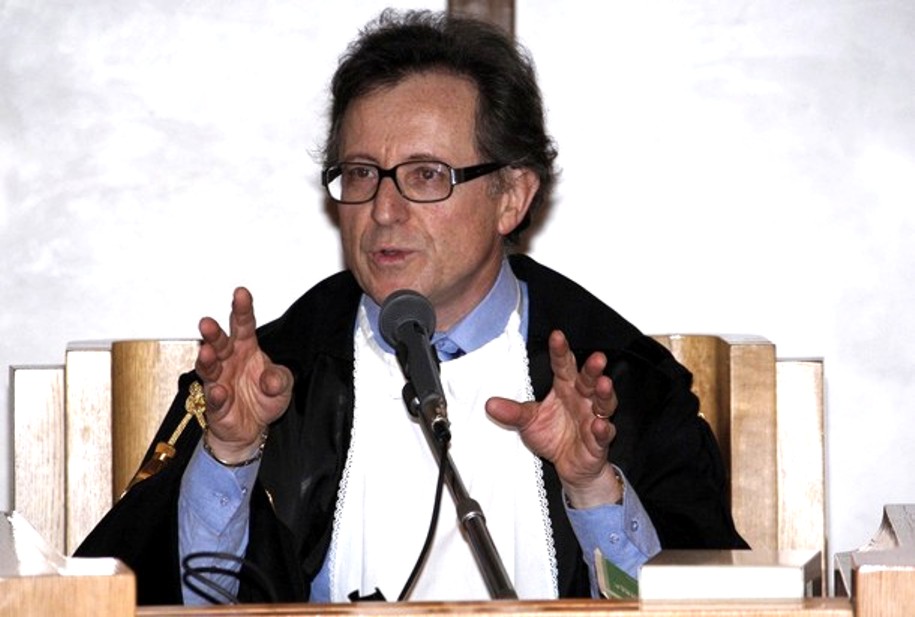
[Above: Dr Giancarlo Massei, the president of the Court]
Our intention with this new series of posts is to show how thorough the trial was, and how compelling the Massei Report on the grounds for the Knox-Sollecito sentence is.
At the beginning of the trial, the witness counts were considerable: approximately 90 for the prosecution, 60 for the civil plaintiffs, 90 for the defence of Raffaele Sollecito, and 65 for the defence of Amanda Knox.
However, a large number of witnesses for both Amanda Knox and for Raffaele Sollecito were removed from the witness listing. Thus the actual number of people testifying was lower than originally expected.
Here is a comprehensive list I have compiled, made by going through the Massei Report, picking out the witnesses, and noting what they testified about. If I had the information available, I have noted where a witness was specifically called by the defence of either of the then defendants.
Officers Of The Court
- Judges: Dr Beatrice Cristiani and Dr Giancarlo Massei, the president of the Court.
- Prosecutors: Public Ministers Dr Manuela Comodi and Dr Giuliano Mignini.
- Interpreter for Amanda Knox: Dr Anna Baldelli Fronticelli.
The Legal Teams:
- For the family of Meredith Kercher: Francesco Maresca and Serena Perna.
- For Diya “Patrick” Lumumba: Carlo Pacelli.
- For Aldalia Tattanelli (the owner of the house): Letizia Magnini.
- For Amanda Knox: Luciano Ghirga and Carlo Dalla Vedova.
- For Raffaele Sollecito: Giulia Bongiorno, Daniela Rocchi and Luca Maori.
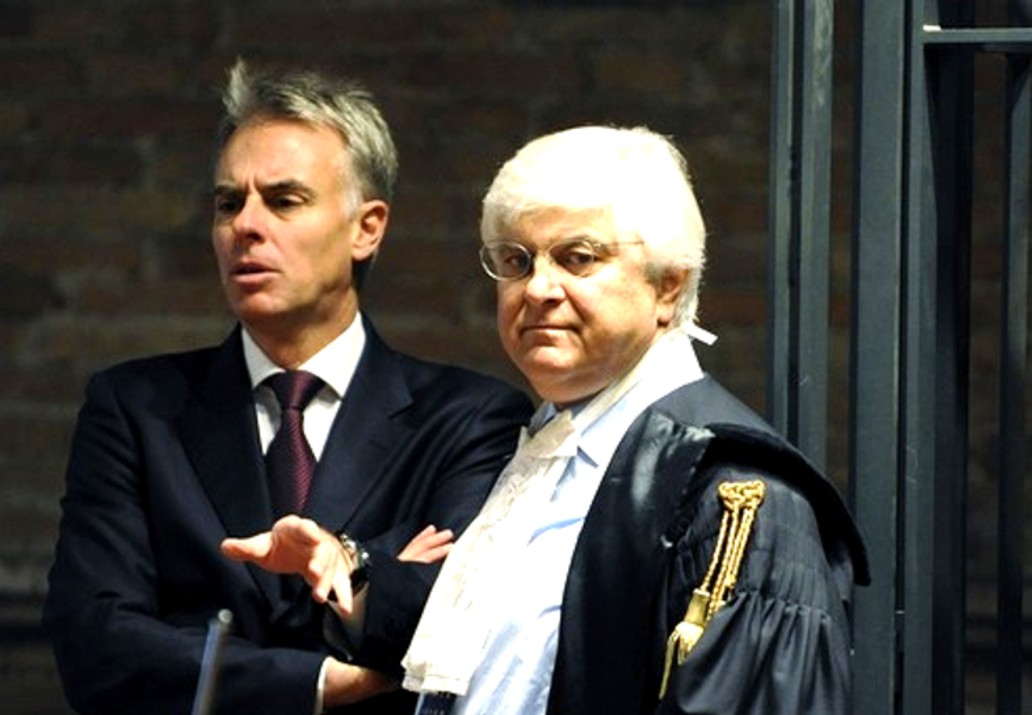
[above: Amanda Knox’s legal team]
Witnesses
The following is a list of witnesses and a brief note as to the evidence they presented. I am not detailing their arguments here, merely indicating the areas the witnesses were heard in. For full details of the evidence and the court’s arguments please read the Massei Report in full and the summaries coming up.
- Amanda Knoxtestified while not under oath at the request of her defence and the legal team representing Diya Lumumba. Her testimony was heard on 12th and 13th June 2009. Raffele Sollecito made a couple of interventions from his seat beside his three lawyers, but he did not get up on the stand.
- Mrs. Elisabetta Lana and her son, Alessandro Biscarini. They discovered two mobile phones, both belonging to Meredith Kercher (one was registered to Filomena Romanelli, Meredith’s flatmate), in their garden at Via Sperandio.
- Dr. Filippo Bartolozzi - at the time Manager of the Department of Communications Police for Umbria - Dr. Bartolozzi received the mobile phones from Mrs Lana, the first at approximately 11.45 to 12.00hrs on 2nd November 2007, the second at approximately 12.15 to 12.20 hrs. He traced the first phone to Filomena Romanelli and, at noon, despatched two officers to her address to investigate why her phone was in Mrs. Lana’s garden.
- Inspector Michele Battistelli and Assistant Fabio Marzi - the two officers despatched by Dr. Bartolozzi. They arrived at 7 Via della Pergola at a little after 12.30 hrs - they found Amanda Knox and Raffaele Sollecito sitting outside the house. They gave evidence about the circumstances leading up to the discovery of Meredith’s body and with regards to securing the scene whilst awaiting the Carabinieri and Scientific Police.
- Filomena Romanelli who was Meredith’s flatmate gave evidence regarding the phone she had lent to Meredith. She also detailed when she had moved into the flat at 7 Via della Pergola and the living arrangements. She told of her plans for the 2nd November and how a worrying phone call from Amanda Knox led to her calling her back and returning to her home earlier than planned. A key point of Ms. Romanelli’s evidence was her disagreement with Amanda Knox over when Meredith locked her door - Ms. Romanelli stated that Meredith had only once locked her door and that was when she had returned to England for a few days.
- Paola Grande, Marco Zaroli and Luca Altieri - the other young people who were at the property when Meredith’s body was discovered. Mr. Altieri broke down the door to Meredith’s room.
- Laura Mezzetti - the fourth flatmate in the upstairs flat at number 7 Via della Pergola. She testified with regards to the living arrangements and also that Amanda Knox is an early riser, a “morning person”.
- Robyn Butterworth, Amy Frost, Sophie Purton and Nathalie Hayward - Meredith’s friends from England. They testified as to when they last saw Meredith and described the behaviour of Amanda Knox and Raffaele Sollecito at the Police Station in the evening of 2nd November 2007. They also testified that Meredith had no plans after returning home at around 21.00 hrs on 1st November other than to study and have a rest as they had been out late the previous night and believed that they had classes the next day. Meredith’s friends did not know of Rudy Guede and had not heard Meredith mention his name.
- Giacomo Silenzi, one of the young men living in the flat underneath Meredith’s flat. He was Meredith’s boyfriend.
- Stafano Bonassi, Marco Marzan and Riccardo Luciani the other tenants of the downstairs flat. Along with Mr. Silenzi they testified as to the the interactions between themselves and the girls upstairs, the gatherings they held, the fact that Rudy Guede was known to Amanda Knox. They testified as to Rudy Guede’s actions at their house. They gave evidence of having met or known of Raffaele Sollecito and his relationship with Amanda Knox.
- Giorgio Cocciaretto a friend of the young men in the downstairs flat testified with regards to knowing Rudy Guede through playing basketball and having seen him at the 7 Via della Pergola house when both Meredith and Amanda Knox were present.
- Rudy Guede availed himself of his right not to participate in the trial of Amanda Knox and Rafaelle Sollecito. Judge Massei details Rudy Guede’s involvement based upon the evidence available in order to complete the reconstruction of events of 2nd November as he was charged alongside Amanda Knox and Raffaele Sollecito.
- Marta Fernandez Nieto and Caroline Espinilla Martin - two young ladies living in the flat above Rudy Guede, they testified than on the night of 31st October they had been in the presence of Rudy Guede and that the only girl they saw him dance with was a “blonde girl with long smooth hair”.
- Gioia Brocci from the Questura of Perugia who testified with regards to a trail of shoe prints leading from Meredith’s room to the exit of the flat getting fainter as they went. Ms. Brocci also testified as to the lack of signs of climbing on the wall below Filomena Romanelli’s window. She also collected evidence from the bathroom next to Meredith’s room.
- Sergeant Francesco Pasquale testified as to the possibility of breaking into the flat though the window in Filomena Romanelli’s room. Sergeant Pasquale was a consultant for the defence.
- Maria Antonietta Salvadori Del Prato Titone, Paolo Brocchi, Matteo Palazzoli and Cristian Tramontano testified with regards to previous incidents involving or possibly involving Rudy Guede.
- Edda Mellas , Amanda Knox’s mother. She testified as to communications with her daughter on the 2nd November amongst other things.
- Antonella Negri a teacher at the University who taught Amanda Knox and who testified as to her diligence as a student.
- Francesco Sollecito, father of Raffaele Sollecito. He testified as to his son’s character and about his communications with his son. He also spoke of his son’s relationship with Amanda Knox.
- Antonio Galizia, Carabinieri station commander in Giovinazzo, the Sollecito family’s home town. He testified that in September 2003 Raffaele Sollecito was found in possession of hashish.
- Jovana Popovic testified as to the presence of Amanda Knox at Raffaele Sollecito’s home at two points in time on the evening of 1st November 2007.
- Diya “Patrick” Lumumba was Amanda Knox’s employer at “Chic”. He testified that he has sent her a text message excusing her from work on the evening of 1st November.
- Rita Ficcara Chief Inspector of the State Police - to whom Amanda Knox delivered a written statement composed whilst she was awaiting to be transferred to Capanne Prison.
- Antonio Curatolo - Mr. Curatolo testified as to having seen Amanda Knox and Raffaele Sollecito at the basketball court in front of the University (the Piazza Grimana) in the evening of 1st November 2007.
- Maurizio Rosignoli - who runs a kiosk in the Piazza - testified with regards to the timing of buses at the Piazza Grimana thus corroborating times in Mr. Curatolo’s evidence.
- Alessia Ceccarelli - who worked managing Mr. Rosignoli’s kiosk - gave evidence as to Mr. Curatolo’s presence in the Piazza.
- Marco Quintavalle, who runs the shop “Margherita Conad”, testified he had seen Amanda Knox at 07.45 hrs on 2nd November, she was waiting for him to open his shop, she went to the section of the store that had items such as groceries, toilet paper and cleaning products but he did not serve her at the till so could not specify what she bought if anything. He testified that he knew Raffaele Sollecito as he was a regular customer.
- Officer Daniele Ceppitelli gave evidence with regards to the 112 calls made by Raffaele Sollecito at 12.51 and 12.54 hrs on 2nd November. In these calls Raffaele Sollecito declared that nothing had been stolen from the flat.
- Nara Capezzali, Antonella Monacchia and Maria Ilaria Dramis gave evidence of unusual sounds and activity coming from the area around 7 Via della Pergola - namely a scream and the sound of running footsteps.

[one of Sollecito’s three lawyers with Sollecito]
Expert Witnesses
- Dr. Lalli, the Coroner, he performed the post mortem and ascertained the cause of death and a “time window” when death was likely to have occurred. He put the time of death between 20.00 hrs on 1st November 2007 and 04.00 hrs the following day.
- Dr. Domenico Giacinto Profazio was head of the Perugia Flying Squad at the time of Meredith’s death. He gave evidence regarding the investigative procedures and safeguards including the physical security of the property.
- Dr. Marco Chiacchiera, deputy director of the Perugia Flying Squad also gave evidence regarding the scene and investigation.
- Monica Napoleoni, Deputy Commissioner of the State Police gave evidence regarding the scene and investigation. She also testified as to Raffaele Sollecito’s desire to remain with Amanda Knox.
- Mauri Bigini a chief inspect at the Flying Squad confirmed the evidence given by Profazio and Napoleoni.
- Armando Finzi a chief inspector at the Flying Squad gave evidence regarding the examination of Raffaele Sollecito’s flat and the collection of the knife which is now termed “the Double DNA Knife” (Exhibit 36).
- Stefano Gubbiotti and Zugarini Lorena confirmed the evidence regarding the search of Raffaele Sollecito’s flat.
- Dr. Giunta from the Scientific Police in Rome directed the detection of latent prints at the scene.
- Dr. Patrizia Stefanoni from the Scientific Police in Rome collected biological trace evidence for analysis. She also performed the analysis of DNA evidence and testified extensively on all aspects of DNA - from the background science, through the collection and the testing methods employed to the analysis.
- Professor Mauro Marchionni, Dr. Vincenza Liviero and Professor Mauro Bacci, the three consultants appointed by the Public Ministers to analyse the forensic medical evidence testified as to various aspects of Dr. Lalli’s report including the cause of death, timing of death, the sexual assault and the wounds. They reported on the degree of compatibility of the knife - Double DNA Knife, Exhibit 36 - with the wounds suffered.
- Professor Gianaristide Norelli, the consultant for the civil party, is a forensic police doctor. He testified with regards to the time and cause of death and the sexual assault against Meredith. He testified as to the degree of compatibility of the Double DNA Knife with the wounds suffered.
- Professor Francesco Introna, a consultant appointed by Raffaele Sollecito’s defence testified with regards to the forensic medical evidence (cause and time of death, the sexual assault). His opinion is that the murder was committed by one person and that the Double DNA Knife was not the weapon used to inflict the large wound on the left of Meredith’s neck. He hypothesised that Meredith was already undressing at the end of the day when she was surprised by her sole attacker who attacked from behind.
- Professor Carlo Torre, a consultant appointed by Amanda Knox’s defence testified with regards to the same areas as described above. In his opinion the Double DNA knife was not the knife used to inflict the large wound on the left of Meredith’s neck. He believed a stabbing from the front was the most likely dynamic, and he saw nothing that would lead him to believe there was more than one attacker.
- Professor Vinci, a consultant appointed by Raffaele Sollecito’s defence, he testified with regards to the stains on the bed sheet -which appeared to be made in blood, outlining a knife. Professor Vinci also testified with regards to footprints found in the flat.
- Dr Patumi, a consultant appointed by the defence of Amanda Knox, testified with regards to the neck wounds suffered and also with regards to the genetic evidence as detailed by Dr. Stefanoni.
- Professor Anna Aprile, Professor Mario Cingolani and Professor Giancarlo Umani Ronchi, all independent consultants appointed by the judge (GIP) at the preliminary hearing. Professor Aprile testified specifically on the question of the sexual assault, Professors Cingolani and Umani Ronchi again considered the evidence with regards to the cause and time of death and the compatibility of the Double DNA Knife with the large wound on the left of Meredith’s neck.
- Dr. Torricelli, the consultant for Meredith Kercher’s family, testified and gave her opinion on the genetic evidence as detailed by Dr. Stefanoni.
- Dr. Sarah Gino, a consultant appointed by the defence of Amanda Knox, testified and gave her opinion on the genetic evidence as detailed by Dr. Stefanoni.
- Professor Tagliabracci, a consultant appointed by Raffaele Sollecito’s defence, testified and gave his opinion on the genetic evidence as detailed by Dr. Stefanoni. He also gave evidence with regards to the effects of certain drugs.
- Marco Trotta, Claudio Trifici and Gregori Mirco officers of the Postal Police, gave evidence with regards to the seized computer equipment and also with regards to internet activity at the home of Raffaele Sollecito.
- Mr. Fabio Formenti, the technical consultant appointed by Raffaele Sollecito’s defence - observed the Postal Police’s analysis of the computer equipment.
- Dr Michele Gigli and Dr. Antonio D’Ambrosio, consultants appointed by Raffaele Sollecito’s defence, testified with regards to the computer and internet evidence.
- Chief Inspector Letterio Latella gave evidence with regards to mobile phones and how they pick up signals from base stations which cover certain areas, he also testified with regards to the call records of the mobile phones of the defendants, victim and others. He detailed how a connection to the network was picked up by the base stations and how the location of the phone can be approximated through knowing which base station was used. He was able to tell the court which connections to Meredith’s two phones were made from her own flat and which from Mrs. Lana’s garden.
- Assistant Stefano Sisani provided evidence with regards to both landline telephone services and mobile phone services.
- Bruno Pellero an engineer appointed by Raffaele Sollecito’s defence to give evidence with regards to telephonic communications.
- Dr. Lorenzo Rinaldi, Principal Technical Director of the State Police, director of the three sections which compose the Identity Division of the ERT, gave evidence regarding shoe prints and footprints (including those highlighted by the use of luminol.
- Chief Inspector Pietro Boemia, who worked alongside Dr. Rinaldi.
- Chief Inspector Claudio Ippolito a consultant who reported on shoe prints - appointed by the public minister.

[Background: the Judges and jury (lay judges) for the trial]>
Tuesday, June 22, 2010
The Aviello Story Seems To Show The RS & AK Defenses All But Concede Guilt Of All 3
Posted by Peter Quennell
Defenses Grasping At Straws?
The Sollecito defense latched with alacrity onto baby-killer and jailhouse-snitch Mario Alessi three months ago.
This seemed to have been widely taken in Italy as a sign of the Sollecito defense’s desperate weakness, rather than as a get-out-of-jail-free trump-card for RS.
Several weeks ago, the Amanda Knox defense latched onto Camorra clan-member and jailhouse snitch Luciano Aviello.
With a lot less alacrity though - his various stories have been around for a long time. This seemed to have been widely taken in Italy as a sign of the Knox defense’s desperate weakness,
Luciano Aviello, who is now in prison, and his brother Antonio, now on the run, are or were connected to the Camorra (NBC Dateline report above) which is Naples’s equivalent of the Cosa Nostra in Sicily and the NDrangheta in Calabria. The Camorra was in some ways the older, larger and badder of the several mafia arms.
Luciano Aviello and Antonio Aviello were living in Perugia at the time the crime against Meredith took place. Over a year ago, our poster Catnip posted this translation of a report from Italy on the Perugia Murder File board.
Saturday 09 May 2009
Prisoner writes: ‘I know real murderer’s name’
“I know the real name of Meredith’s killer, a fellow-brother Albanian friend of mine told me, and it’s not Raffaele Sollecito.” Luciano Aviello is Raffaele Sollecito’s ex-cellmate and, now, maybe encumbering his admirer, is writing another letter to Court of Assize president Giancarlo Massei.
A few weeks ago he had sent a letter in which he claims to have asked two of his friends to break into the murder house to prove that anybody could have done so. Yesterday, the page count of his letter jumped to five, and the tone was angrier.
He’s had it with journalists, because they’ve referred to his less than clear past, and because they wrote about his previous never-proven-true “revelations” on various important and dramatic criminal cases (like the disappearance of little Angela Celentano).
He’s had it with the police too, in whom he confided his secret about Raffaele’s innocence and who didn’t even give him the time of day.
He maintains that, actually, he has a letter written by an Albanian friend, which contains the real name of the murderer, and he wants to speak only to the court president, Giancarlo Massei, to reveal it to him.
Even the lawyer on the civil side of the case, Francesco Maresca, acting for the Kerchers, remains skeptical: “That letter ought to be re-read carefully: it’s not flour from his grainsack*”.
*****************
* This is a proverbial phrase (non è farina del suo sacco = “it’s not grist from his own mill”) meaning it wasn’t written off his own bat, and that other hands contributed to it.
And there is a video of a Sky News Italy report in Italian dated 21 April 2009 which in effect says “this isn’t any big deal’.
Judge Massei showed no interest in him. So Aviello and his kaleidoscopic claims thereupon went onto the back burner.
Fast-forward to several weeks ago, when the Knox defense engages in a high-profile, noisy flurry of activity to get a deposition from Luciano Aviello.
This time, Luciano recalls, it was actually his own missing brother who did it, and he himself buried some clothing, a knife, and some keys.
Casting total doubt on everything Luciano Aviello ever says, his hometown newspaper Il Mattino in Naples comes out with this report. It is our translation.
The Meredith Case - A Mariano Clan Supergrass Pops Up
“Amanda Is Innocent”
By Gigi di Fiore
In the newsroom of the Mattino he seemed at ease. Luciano Aviello was [20 years ago] just over twenty years old, and had asked to recount his experience as a “streetwise youth in the Mariano Camorra clan”.
In an earlier time, a war was in full swing in the Spanish Quarter [of Naples] between the Mariano clan, the “picuozzo” [another name for this clan after the “picuozzo” or cord around a monk’s habit] and the Di Biase family, also known as the “faiano”.
The DDA (Direzione Distrettuale Antimafia or Distict Anti-Mafia Directorate) did not yet exist, but Federico Cafiero de Raho was already employed as prosecutor in the investigations into organized crime.
It was he who dealt with that bloody war. Twenty years later, Aviello had become a news-magazine character. Now in his own words, he claims to have a rolet in the Perugia trial for the Meredith Kercher case as a “decisive” witness.
On 19 April of last year, he addressed two little hand-written pages to the President of the Court of Assizes of Perugia, Giancarlo Massei. He declared himself ready to tell the truth, and revealed that he had twice given some friends of his the task of breaking the seals on the house where the crime took place.
On 31 March of this year, Amanda Knox’s defense team video-recorded the declarations made by Aviello, who is now 41 years old. As the weekly news-magazine “Oggi” writes, he said: “It was my brother who murdered Amanda [sic]. I can recover for you the knife used in the crime and the keys of that house”.
This fellow arrived on the third floor of via Chiatamone [Editor’s office of the Mattino] wearing casual clothes with a pretence of elegance: he never retracts anything, always seeking to find suitable words to best describe his “revelations”.
Contact lenses, slim, a cousin killed because he was affiliated to the Mariano clan, Aviello spoke, revealing an outline personality, in a shadow world of braggadoccio, always on the sidelines of the dealings and violent acts of those in power among the clans of the Quarter at that time.
He ended up in jail, having confessed to a murder. It wasn’t true, but they had promised him 5 million lira, a lawyer and an annuity.
The clan didn’t respect the pact, and so he began to talk freely. Enticed by the good life, he began to act as a gofer/go-between selling “black lottery” tickets. He felt important. He earned 500 thousand lira per week.
It wasn’t bad. Then he did “embassies” [message-running], little services, but never great criminal leaps. The clans considered him “not very trustworthy”.
He was implicated in the investigation into the Spanish Quarter Camorra, and convicted.
Today, Federico Cafiero, now deputy prosecutor and DDA Coordinator for the investigations into the Caserta province clans, says of him: “He was altogether untrustworthy, although every so often he would invent a new one [new story]. A revelation, as he would call it, which would subsequently reveal itself to be out and out nonsense”.
Such as when he said that he knew where Angela Calentano was to be found, or that he knew the hideouts of the main fugitives of the D’Alessandro di Castellammare clan.
For his “revelations” against Tiziana Maiolo, ex president of the Justice Commission of the Chamber, he was hit with a trial, in 1997, for calumny.
Two years ago, he fired off his biggest tale yet: he accused a public prosecutor from Potenza in the famous trial on “dirty robes” between Catanzaro and Salerno. He was given an audience by the prosecutor Rosa Volpe in Salerno.
He had announced revelations. His contradictions were immediately exposed.
On those occasions also, the sources of his stories were newspaper articles or gossip with his cell-mates. Such as Raffaele Sollecito, or Gennaro Cappiello for the “dirty robes” investigation.
A compulsive liar, a seeker of publicity?
Twenty years ago, Aviello seemed to be a self-centred person, proud to present himself as a witness to “important facts”. But he never managed to arrive at a scheme of constant collaboration.
For various crimes, he has so far served 17 years in jail. Now the Perugia case appears. Who knows?
Our poster SomeAlibi seems to have had the last meaningful word on the absurdity of this tale. SomeAlibi posted this rather devastating satire on the PMF forum.
I can see it now..
Ghirga: “Well thank you Mr Luciano Aviello, that testimony I think the court will find extremely interesting concerning why Amanda Knox couldn’t have done the murder because it was your brother who was responsible. Despite the fact he’s missing. But thank you and I believe we’re finished.”
Luciano Aviello (quietly): “We ain’t finished”
G: “Uh?”
LA: “So, about this de-fa-may-shun thing.”
G: “Uh?”
LA: “She didn’t do it.”
G: “Sorry?”
LA: “She didn’t dooo it.”
G: “But Mr Aviello we brought you here to talk about the murder not the—”
LA: ”—see it sounds like you ain’t hearing me too good. Perhaps you need a little airation of your ears to help you with that. How would a 22 millimetre hole strike ya? She didn’t say nothing. She didn’t doooo it, capice?”
G: “But, she said it in interview. And in court. I mean, we were all there”
LA (putting tooth-pick on witness stand) “See, now you are making me repeat myself and I don’t like that at all, no I don’t. But I am a tolerant man, so maybe once more for luck ok? She didn’t dooooooooo it.”
G: “All of us were there!... She doesn’t actually disagree she said it…. hello… Mr Aviello… hello… what are you…. what are you doing… why are you counting?”
LA: “Now requiring this many pine boxes ain’t going to be ecologically acceptable my friend, so I suggest EVERYONE here learns to listen up real good ok?”
Court (all): “Huh?”
LA: “Repeat after me. She didn’t dooooooooooooooooo iiiit”
Court (all): “Like hell she didn’t”
LA: “Wise guys, huh?”
Well… that certainly went very well! This all reads like an Italian movie called in English Johnny Stecchino by Italy’s favorite funny actor Robertio Benignii
He accidentally finds himself confused with a mafiosos in Sicily, sees his days are very numbered, and starts talking fast. Very fast… He gets out of it, somehow, but the real mafioso still takes the hit.
Nice knowing you, Luciano…
Tuesday, June 01, 2010
Knox Hearing On Calunnia Charges Technicality, Then Trial Set To Be Under Way June 16
Posted by Peter Quennell
Nick Squires in Rome for the Daily Telegraph has the report which includes this.
Knox’s lawyer, Luciano Ghirga, argued that it was inappropriate for the slander charge to be heard by judge Claudia Matteini, because she had been involved in one of the preliminary hearings into the Kercher murder.
The case on Tuesday was adjourned until June 17, when another judge is likely to be assigned to the case. The trial is likely to start on October 1. Her appeal is also expected to start in the autumn, meaning that the two cases could run concurrently.
If Knox is found guilty of slander, she could face another six years in jail, on top of the 26 years she is currently serving.
And Knox could face MORE time than 26 plus six years if the prosecution wins it on appeal. Possibly a total of forty.
So much for the PR campaign and the ongoing misinterpretation of the evidence and sliming of the prosecution by the “pro-Knox” websites. Guede of course ran no campaign, his lawyers and friends were always respectful, he took the short-form trial (an admission of some kind of guilt), and he tried some sort of apology to Meredith’s family.
And after his first appeal he emerged with only 16 years.
Sunday, May 30, 2010
Questions For Knox And Sollecito: Ten From Daily Beast As Knox Calunnia #2 Trial Starts
Posted by Peter Quennell
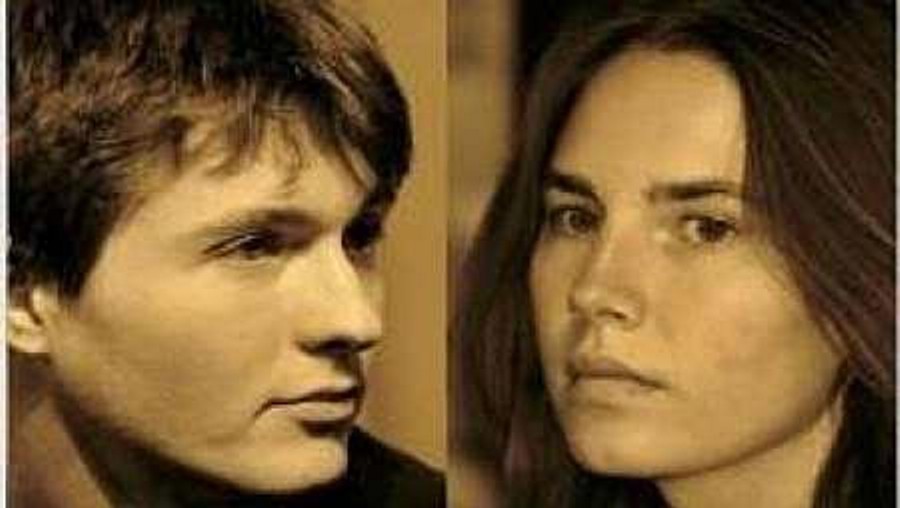
This Daily Beast report indicates that the cancelled jailhouse TV interview with Amanda Knox was a lot more firmed-up than Knox’s stepfather, Chris Mellas, seems to have claimed.
And it outlines the first phase of Knox’s Calunnia #2 trial which is based on charges brought by the interrogating police, all of whom testified at her trial that she was treated well during her interrogations as a witness and suspect. .
Click the image or link above above for the fine reporter Barbie Nadeau’s full article on some issues Knox has never been able to account for, including Knox’s callous skipping of Meredith’s memorial service.
The ten questions are all very tough, and each would also have been asked by the jury. Here they are:
.:
It’s back to court for Amanda Knox, the 22-year-old Seattle native currently serving 26 years in prison in Italy for sexually assaulting and murdering her British roommate, Meredith Kercher.
This week, Knox is expected to attend a preliminary hearing on slander charges lodged against her for accusing Perugia police of abuse. During her testimony at her murder trial last June, she accused the cops of slapping her on the back of the head during an interrogation just days after Kercher’s body was discovered in November 2007.
The police deny hitting her, and Knox’s own lawyers have never filed charges for the alleged abuse. If she is convicted of slander, a judge could add six years to her sentence….
Knox’s resurgence in the headlines was to coincide with a joint jailhouse interview she had granted to ABC News and the Italian broadcaster Mediaset’s Matrix program. But the bureau of prisons denied the interview in the final hour, effectively silencing Knox indefinitely.
A high-profile jailhouse interview with Knox is considered the Holy Grail by journalists covering the case, and the American and Italian networks have been vying for a chance to ask Knox a few questions on camera. Now it is unlikely anyone will get an interview before Knox’s appeal hearings this fall.
But if we did, there are a few questions we’d want her to put to rest.
1. Why did you and Raffaele Sollecito turn off your cell phones at the same time the night of November 1, 2007 and on again at the same time the next morning? You told the police that you and Raffaele slept late the morning of November 2, 2007, but phone records show that you both turned your phones back on very early that morning. How could that be?
2. Why were you bleeding? Your lawyers agree with the prosecution’s findings that at least one of the spots of Meredith’s blood found in the house where she was killed had your blood mixed with it. Your mother told me that you had your period. Your stepfather told others that your ear piercings were infected. Which was it?
3. Once you realized your mistake in blaming Patrick Lumumba for Meredith’s murder, why didn’t you tell the authorities? You told your mother that you felt bad about it, so why didn’t you alert an official so Patrick could be set free?
4. Why did you go with Raffaele to the police station on November 5? You were not called in for questioning. Did you realize at that time that you were both under suspicion?
5. Why weren’t your and Raffaele’s fingerprints found in your house after the murder if the two of you had spent time there that morning and the day before? Only one half-print on a glass in the kitchen has been attributed to you, yet you have claimed that you took a shower there that morning. How did you spend so much time there and leave virtually no trace?
6. Why did you take the mop and bucket from your house over to Raffaele’s house? You told the prosecutor during your testimony in June 2009 that you took the mop and bucket to his house to clean up a leak under his kitchen sink. But by your own testimony, the leak was miniscule and could have been easily cleaned up without it. What were you really doing with the mop?
7. What would you do differently if you had a chance to rewind the clock back to November 3, 2007? Would you go to the memorial service for Meredith? Would you still have gone to the police station with Raffaele? Would you have left for Germany when your aunt asked you to?
8. What do you think happened the night Meredith was killed? You have professed your innocence. Who do you think killed her and under what circumstances?
9. What do you really think of the Italian justice system? You told an Italian parliamentarian that you got a fair trial, and you even thanked the prosecutors for trying to solve the mystery of Meredith’s death, but your supporters at home in Seattle maintain that the Italian system is corrupt and unfair. What is your real view?
10. Is there anything you wish you would have said in court during your trial? You talked about your vibrator and about how you did not want an assassin’s mask forced on you. But in your final appeal after the closing arguments on December 4, 2010, why didn’t you say the words, “I did not kill Meredith Kercher?” Raffaele did when it was his turn to speak. Why didn’t you?
Our posting soon of the judges’ sentencing report will open up dozens of new questions for Knox. Such as: “How did you track Meredith’s blood into your own room and leave three traces revealed by luminol?”
Tuesday, May 25, 2010
The Chilling Killing Propensities Of Sollecito’s Various Knives
Posted by SomeAlibi
The few rather puerile websites trying to make the case that Knox and Sollecito were framed all have this one thing in common.
They are all of them a mile or more wide on the facts of the evidence - but only a millimeter or so deep.
Time and again on some point of evidence TJMK and PMF have gone far, far deeper than they have - and from then on, on that particular point, deafening silence is quite usual. Here is one very good example, on TJMK, highly incriminating in itself, and highly suggestive of when and how Edda Mellas first realised her daughter was guilty.
On that point of hard evidence, almost enough to incriminate Amanda all by itself, there has never been any real comeback. The PR campaign’s Wizard of Oz moves on.
Now we advance another in-depth analysis. This time it focuses on the really deadly nature of Sollecito’s various knives, and we’ll await the comeback if any with interest.
In effect, the deniers’ argument made is that Sollecito is not a collector or an aficionado, just a young man who might need to cut an apple with a pocket-knife. And he’s certainly not a hardcore knife collector, collecting fantasy-wish-list knives.
Carrying a pocket-knife above a certain size in public is illegal in Italy. But ignoring that technicality for a minute, let’s examine the knives of Raffaele Sollecito which were impounded during his arrest. Three knives, moving up in degrees of interest, not counting the very large knife prosecution witnesses identified as the murder weapon.
Knife Three
Take a look at the image up the top here. This knife actually hung above Sollecito’s bed.
It is a replica combat knife. The heavy t-bar protection is designed to protect the hand of the knife-user from slipping onto the blade when being used to stab another person, as well as to protect the user against another blade.
Blood grooves exist for only one purpose - as they imply, they are there for when one stabs someone deeply with the knife: they allow the blood to run out down the grooves. This breaks the seal and suction of the enclosing wound around the blade which makes the knife far easier to withdraw
That knife is specifically designed for stabbing people as well as cutting sentries’ throats etc. The female arm in the picture is Amanda’s by the way (you can find the zoomed-out version showing all of Amanda in the PMF gallery), as it was taken when she was being shown the knife in court.
She must have recognized it, of course, since it was from Raffaele’s bedroom, and would have been a rather noticeable discussion piece within view whenever Knox was in the room or laying on the bed.
Many teenagers and young adults put the objects of their highest interest and infatuation, from bands to film-stars, on their walls. Raffaele chose to put a knife designed for killing people on his wall.
It would be a lurking and incongruous presence on a small student-sized bedroom wall in the minds of the vast majority of people. The question of Raffaele’s degree of attraction to knives such that he actively chose to mount a replica combat knife on his bedroom wall doesn’t appear to need much further discussion.
And yet, it’s actually only less than a third of the equation as it was only a replica. Now let’s turn to two real knives - his so-proclaimed pocket knives - which Raffaele confirmed in his own words that he carried on him every day for years, and which tell a more subtle and deeper story.
First, consider what is the meaning of a pocket knife to you.
The phrase “˜pocket knife’ has been translated from the Italian from the transcripts / press coverage. For many, including myself, this will have conjured a mental image of a Swiss Army type knife or a simple blade and indeed this is the prevalent definition of a conventional pocket knife.
Let’s actually have a look at Raffaele’s “pocket knives” courtesy of pictures posted by poster Jools on PMF. These knives were impounded, one from the apartment and one, unbelievably, from Raffaele’s person at the Questura.
In the case of the latter, even Raffaele saw this as a devastating “own-goal” as we can read from his diary entry of 7 November 2007; “I’m not even able to offer guilt, given my deep fu**ing stupidity for the fact that I smoke cannabis I even forget what I have eaten and also for that I carry behind a knife to nock the tables and the trees and I carry it so often that I brought it also to the police headquarters.”
Knife Two
This is a 2.9 inch blade drop point, near spear point knife. At first glance (apart from the mark on the clip which should be ignored and was benign), the deniers camp might say “Well, look at it - it’s just a pocket knife even if it looks a bit sharp and so on ““ look, it’s even got a cute clip for the pocket, like on a pen.”
Let’s start there. The clip is actually a reversible one ““ it can be taken off and re-screwed to the knife to the user’s side / orientation of preference. This is already a proper knife rather than a cheap shop pick-up.
More obviously, the half-serrated edge to the blade for cutting is an active design (and purchase) feature.
Third, the “˜grind’ on the top the blade shows an aesthetic sensibility to the design but also serves a functional purpose for a cutting or stabbing use in terms of reducing friction.
Fourth, the serrations or (quite aggressive) “˜jimping’ on the top of the handle, just behind the blade are there to provide thumb grip.
Quite a lot of design features on this knife for a casual “pocket knife” one might think.
Which leaves us with the odd bar code thing at the top edge of the blade and the indistinct logo on the blade. Let’s see what that logo is with a little enhancing;
“˜Brian Tighe Design’. Brian Tighe?? Google sets us straight on who he is.
“You’d need a calculator to count the number of custom knife-makers who have jumped into the tactical fray over the past five years. You can tally the cream of the crop on two hands, being sure to earmark one of those digits for knifemaker Brian Tighe. In a matter of just a couple of years Tighe (pronounced “Tie”) has risen from the rank and file of edged weapons artisans to the rarefied air of the top 10 elite.”
A look at Tighe’s site shows that his own company’s knives sell for 500 dollars and up. He is a globally feted knife designer whose wait list for his knives was as high as seven years at one point.
So the design of the knife here is actually that of a noted master knife maker. Almost something one might collect, one might say. As loaded as Papa Doc Sollecito is, did Raffaele really spend over 500 dollars on such a knife?
Well no, actually, he didnt need to. This is a Columbia River Knife & Tool produced 811x series knife bearing Brian Tighe’s name. CRKT are a dedicated knife company who specialise in working with the world’s leading knife designers and producing the knives for a bigger market but still as proper aficionado pieces.
At this level of knife, there are extensive magazine, web and “˜user’ reviews. Knives like this are tested for resilience and sharpness including things like edge-on paper-cut tests where paper is cut through just like a razor from the side of a piece of paper held by one hand.
Such a knife is able to catch the edge of the paper and then slice straight through the width of the paper side-on without any tension in the paper. That’s what a knife like this is capable of. A “pocket knife” to me sounds like something picked up for 10 or 20 euro. The current model that replaced Raffaele’s now out-of-series model sells for about $80 at retail. Here’s the actual 2004 model that Raffaele had i.e. the same as the one above;
Worth looking at that for a second or two… Oh the bar code? It’s not a bar code, it a rectangular thumb stud you flick the knife open with. When you do, the knife goes to a locked position unlike many “pocket-knives”. In English speaking knife circles, these knives are not generally referred to as pocket-knives but are called “Tactical Knives” which are a cross-over of usage knives for outdoors / cutting etc but also for personal “protection”.
So, in addition to the wall-mounted replica combat knife, one of Raffaele’s daily carries (see diary / testimony) was a designer thumb-flicked locking tactical knife with jimping, top blade grind, switchable clip and a razor sharp edge costing about 80 bucks. That you can only carry in your pocket. Illegally. Some apple-cutter.
Let’s take a look now at the most worrying knife of all…
Knife One
At first glimpse, this “pocket knife” looks quite martial arts like, given the hole and the weird top edge of the blade and the spider logo.
The logo marks this as a Spyderco knife ““ a large premium knife manufacturer of tactical and many other types of knives. This particular model is a Delica4 Emerson Opener retailing for about $109.95rrp. Of particular note about this knife is the hole and the top edge. The hole, a Spyderco feature, allows a thumb to flick the blade open very quickly. This knife is about speed.
But actually the thumb hole is not the real speed feature ““ that is reserved for the top edge curl.
This is a truly specialist feature known as an Emerson Opener or “wave”. The idea is that the curl in metal catches on the edge of a pocket edge on drawing the knife and opens it immediately (see videos below).
This is a speciality feature licensed from Emerson knives ““ Emerson being another feted “˜name’ knife designer. The wave is only present on two of Spyderco’s 330 knives listed on their website ““ the Delica and the ¾ inch larger sister knife the Endura (“the best self defence knife in the world” according to one enthusiastic teenager on youtube). That’s how specialist it is.
The job of the wave feature is to provide the fastest opening knife in the world bar none ““ faster than a flick or spring knife in fact. This video (many similar to be found) gives a rather disturbing insight into what the real attraction of owning this knife is to a hardcore knife knut like Raffaele; (remember when you watch this for the first time that the knife is closed inside that pocket and also enable the sound on the embedded player below by clicking off the mute)
If I thought my son had a penknife, but then actually saw him with this, we would be having a very long chat..
“Enough!” the deniers say?! “You’ve still got it in for Raffaele haven’t you?” they say?! Despite the replica combat knife on the bedroom wall, the designer Brian Tighe Design CRKT drop-point and the Spyderco Delica4 with wave design)? “You’ve used prejudicial phrases like “hardcore knife knut” haven’t you?” they say?!
Sorry, but don’t look at me. They’re not my words.
They’re the words of Spyderco itself on its own webpage. See here and below.
Raffaele was out to impress Amanda and by his own admission both obsessive about her and a hardcore stoner. He also thought knives - proper knives with exclusive features by name knife designers not pocket knives were fascinating.
As with all of this case and any case, you REALLY need to look at the detailed evidence.
The overwhelming prevalence of skin-deep level of analysis / downplaying of this case by much of the deniers camp will lend and always has lent itself to people dismissing serious evidence as inconsequential based on their lack of understanding of what actually is in question.
The “mere pocket-knife” impression of Raffaele’s interest in knives is a clear case in hand. Raffaele’s father testified in court that his son carried a pen-knife. Some pen-knives or pocket-knives these really were…
As always with this case, when you take the time to look at the real detail, the reality you find is something far more disturbing…..


